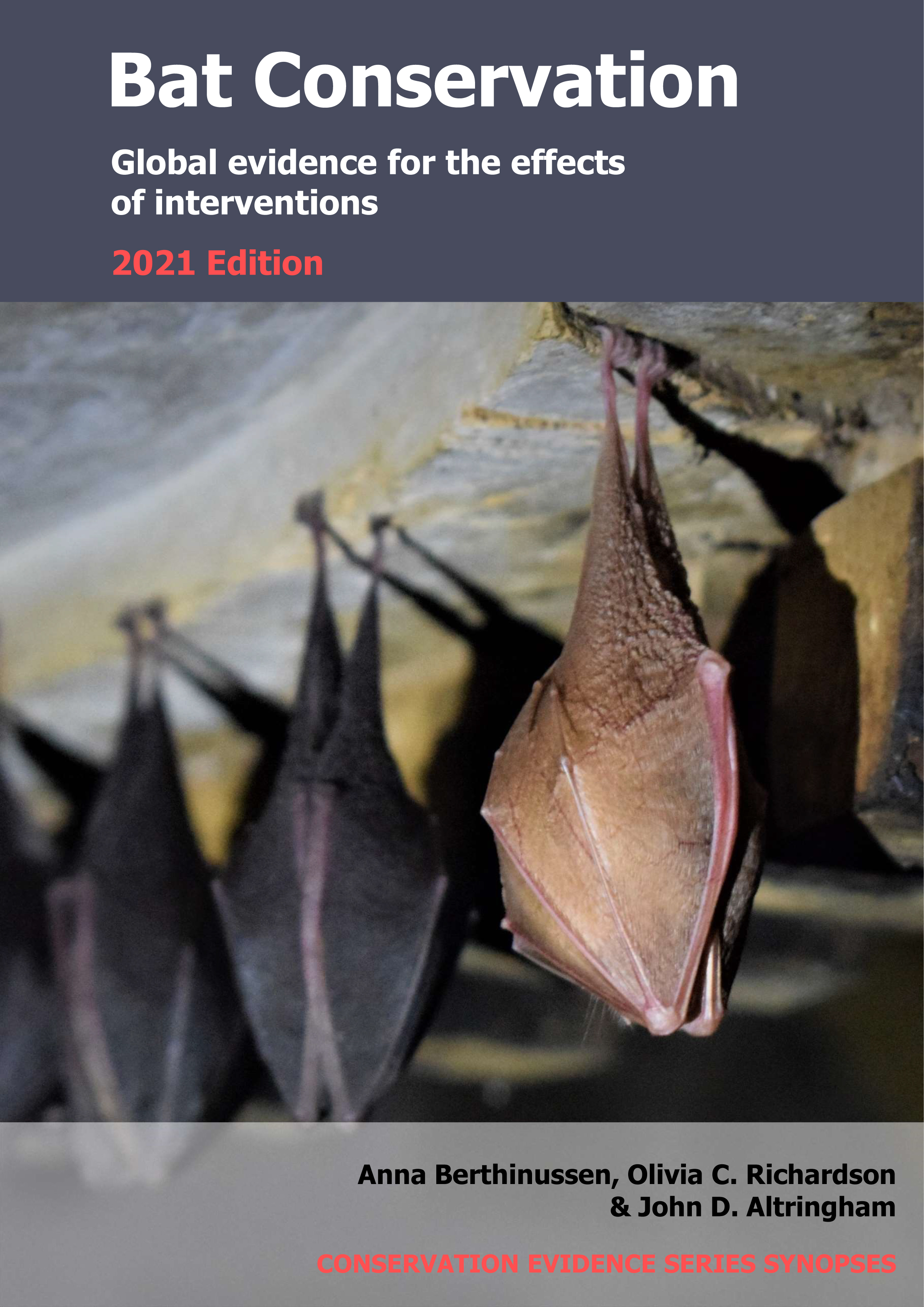Relocate access points to bat roosts within developments
-
Overall effectiveness category Unknown effectiveness (limited evidence)
-
Number of studies: 2
View assessment score
Hide assessment score
How is the evidence assessed?
-
Effectiveness
45% -
Certainty
32% -
Harms
10%
Study locations
Supporting evidence from individual studies
A before-and-after study in 2004–2008 of one building renovation in Ireland (Aughney 2008) found that after relocating the access points to a bat roost within an attic during renovations, fewer brown long-eared bats Plecotus auritus used the roost and no bats were observed flying through the new access points. Before the renovations, 19 and eight brown long-eared bats were recorded exiting the roost through two original access points. After the renovations, no bats were observed exiting through two relocated access points and the number of droppings found inside the attic (<100) indicated that fewer bats were using the roost than before the renovations (number not reported). The building was a 19th century brick house. During renovation work, two bat access points consisting of angled slats (‘louvres’) were installed in the roof in different locations to the original bat access points. Renovations were completed in early 2007. Emergence counts were carried out once in June 2004 before the renovations, and once in August 2008 after the renovations. An internal inspection was carried out in October 2008.
Study and other actions testedA before-and-after study in 1993–2016 of one building development in the UK (Reason 2017) found that an alternative access point with a ‘straight’ design resulted in an increase in lesser horseshoe bats Rhinolophus hipposideros using the basement of the building as a roost, but an access point with a ‘bend’ resulted in a decrease in bats re-entering the roost. Up to 35 bats were counted emerging from the roost prior to the installation of an alternative access point. After installation of the access point with a ‘bend’ in 2000, a similar number of bats exited the roost (data not reported), but only two were observed re-entering. In 2001, the access point was modified to a ‘straight’ design and the number of bats using the roost increased over a 15-year period (2002: 27 bats; 2016: 416 bats). The ‘bend’ design consisted of a 90° turn at the base of a short vertical shaft and was in place for 11 months. The ‘straight’ design consisted of a sloped chute enclosing the original flight route with a clear flight line into the roost. The building was a large manor house converted into a hotel in 2000–2001. Counts of emerging bats were carried out at least once/year between May and July in 1993–2000. Emergence and re-entry counts were carried out three times/year in 2000–2001. Biennial counts were carried out in July in 2002–2016.
Study and other actions tested
Where has this evidence come from?
List of journals searched by synopsis
All the journals searched for all synopses
This Action forms part of the Action Synopsis:
Bat Conservation
Bat Conservation - Published 2021
Update 2020





)_2023.JPG)














